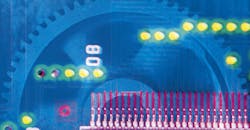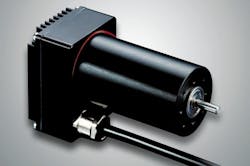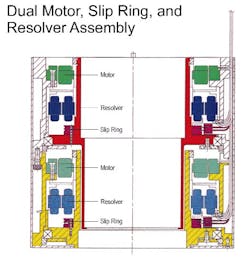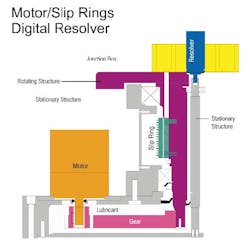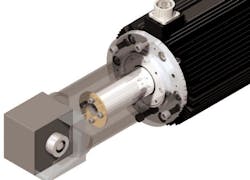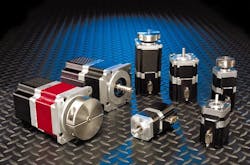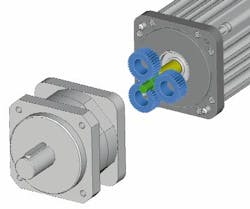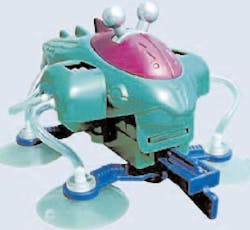The basics of system engineering: What system engineering is and what it does
Imagine an early 20th century engineer waking up in the year 2001 to find himself directing a team of automotive designers. If he survived the shock, he might instinctively begin by polling the group to learn which components they are most familiar with. After hearing many foreign terms like “oxygen sensor” and “engine knock signal processor,” he might, in frustration, ask if anyone knows anything about real components like carburetors, alternators, and distributor caps.
In a similar way, the motion system components we are now familiar with will be vastly different by the end of the 21st century. In some cases, unrecognizable. Functions that now sprawl over two or three components may end up residing in one; some elements may be gone entirely, dissolved into the fabric of the machine or taken up in software.
The path from here to there is not built so much on new technology, but new ways of implementing and combining it. The old way reflects traditional college engineering curriculum, which for practical purposes breaks machines down into disciplines, functions, and closely allied components. The partitions are artificial, however, and are becoming porous as technology and business practices transcend the abilities of individual engineers and the compartmentalized training they received.
The new approach to design, called system engineering, actually began in the late 1950s with large-scale military and aerospace projects. Since then, the method has been adopted by automakers as well as general manufacturers.
What is system engineering?
According to the International Council on Systems Engineering, it is “an interdisciplinary approach and means to enable the realization of successful systems.” In other words, it’s a way to design and build things that sell at a profit and do what they’re supposed to do for as long as they’re supposed to do it.
System engineering focuses on defining needs and functions early in the development cycle. It entails documenting all requirements at the start, then generating and validating the design with the entire product cycle in mind: operations, performance, testing, manufacturing, cost and scheduling, training and support, and disposal.
Although it involves additional work, the benefits of system engineering make it worthwhile. “Advantages include ease of integration and a shorter sales cycle for the supplier,” says Charles Schultz, vice president of sales for California Linear Devices Inc., Carlsbad, Calif. “It also promotes closer partnerships, letting machine builders focus on core strengths rather than ancillary tasks that used to require the additional expertise of a system integrator or control specialist.”
“We see the system approach as very much a trend,” says Don Labriola, president of QuickSilver Controls Inc., Covina, Calif. “Engineers are in short supply, with more firms willing to buy solutions instead of building them. Actually they save money that way,” Labriola explains. Electronics are cheaper than connectors and cables, so the more functions implemented in silicon and software, the better. Not too long ago, it was the other way around.
Complexity and certainty are also factors. “Projects are more complex than they were ten years ago, so it makes sense to purchase ‘function blocks’ rather than individual components,” Labriola explains. “This also simplifies certification because performance factors are known up front rather than arrived at later.”
Who’s using design engineering?
One company that finds itself doing more and more system engineering is MicroMo Electronics Inc., Clearwater, Fla. The driving factor, as usual, is time and money. “It’s often less expensive to buy a complete system than to mix-andmatch components from several suppliers,” says Tod Grizzell, application engineer. “A turn-key system saves time as well, especially if you have a small staff, and there’s no guesswork in who to call for technical support.”
System engineering is more complicated than standard design, however, requiring both the supplier and designer to share a detailed knowledge of the application. Suppliers, therefore, must spend a lot of time gathering information. “It’s important for our engineers to understand not just the application, but budgets and time-tables as well,” explains Grizzell.
“We start by helping customers select the appropriate motor or gearmotor. We want to know how much torque is required; what are the motion needs; what are they moving; and what are the physical constraints — length, diameter, weight, thermal environment, and so on. The next step is to find out how the end user wants to control the motion,” Grizzell says.
The system approach, with everyone working as a team, follows a structured process from concept to production to operation. It considers both business and technical needs, with the goal of providing a quality product that meets all requirements.
To become more “system” oriented, MicroMo established a new product development process that’s both technology and customer-driven. Now, the motor maker’s design and fabrication process can be customized on an individual basis. “Our process lets us use custom lubes, for example, on gearheads slated for quiet or extreme cold applications,” says Grizzell. “We’ve even designed pieces for another manufacturer’s motor to drive an impeller system used in coronary interventions.”
School’s in — universities now offer system engineering
Not to be left out, several universities now offer system engineering courses. Many of these schools are home to Engineering Research Centers sponsored by the National Science Foundation. The centers focus on system and interdisciplinary engineering, working in close partnership with industry.
Most of the activity at a typical Engineering Research Center is in the gray area between the discovery-driven culture of science and the innovation-driven culture of engineering. By integrating standard engineering practice, fundamental research, and the ways of industry, the centers give students the tools they need to excel throughout their career.
A recent National Science Foundation survey bears out the value of interdisciplinary education. Close to 90% of employers who hired Engineering Research Center graduates rate them as being better prepared than their peers. Engineers like these are specifically sought out for industrial and government positions in aerospace, defense, automotive, communications, and energy.
Another approach to system engineering education is the mechatronics route. One university offering such a program is San Jose State. Tai-Ran Hsu, who works in the mechanical and aerospace engineering departments, defines mechatronics as an engineering process that involves the design and manufacture of intelligent products or systems involving hybrid and electronic functions. ‘Intelligent’ distinguishes mechatronics systems from commonly known electromechanical devices.
Hsu contends that mechatronics education in the U.S. has been sporadic and confined to courses in controls and Computer Integrated Manufacturing mainly for graduate students. In contrast, Japan and other Asian Pacific countries have had programs in place for decades, with Europe following suit more recently. Hsu and others believe a formalized mechatronics education in the U.S. is long overdue. San Jose State’s program has been in place since Fall 1997, after several years of development.
Many companies today are employing “mechatronic” principles, although they don’t always identify with the term. Litton Poly-Scientific, Blacksburg, Va., is one example. At its “special devices facility,” Litton combines servomotors, gears, sensors, and controls to form complete closed-loop motion systems. Although Litton’s integrated motion technology (IMT) systems are often developed as custom solutions, they frequently join the ranks of standard offthe- shelf products.
The integrated approach ensures top performance from all components, resulting in a smaller, lighter assembly compared to “mix and match” solutions, says Greg Boyer, business development manager. “And because IMTs are electrically and mechanically aligned and fully tested, they come ready to integrate into a larger system,” he adds.
Today and tomorrow
The past few years have seen an explosion of smart integrated components along the lines of Litton’s IMTs. Such building blocks are a necessity for system engineering to become an established practice from the component level to the machine level, all the way up to the plant floor. But even stronger forces are at work.
Engineering Research Centers are beginning to promote a new industrial philosophy called “next-generation product realization systems.” It’s a hierarchical methodology that encompasses product design, manufacturing, and enterprise optimization, particularly the dynamics of the product stream in the marketplace. It emphasizes advanced design languages and planning algorithms, concurrent engineering (simultaneous process and product design), heterogeneous (multidisciplinary) modeling, early cost/performance analysis, and the changing role of supply chain management in the age of the Internet.
When graduates from these programs hit the workforce, they’re likely to topple many of the barriers and obstacles still in the way of true interdisciplinary system engineering. In the meantime, before the flood hits, a steady stream of integrated hybrid components is keeping the trend alive thanks to a handful of companies that aren’t afraid to mix silicon, software, and steel.
Ironically, one of the first companies to introduce a truly intelligent motion product is no longer in business. In the early 1990s, Chicagobased Intellico introduced the world’s first commercially available integrated servomotor, called Intellimotor, with the motor, drive, and controller (a Motorola 68000) built-in. Whether or not the company was ahead of its time or simply ran out of cash, Intellico will always be remembered as the company that got it all started. Now the torch has passed to firms such as Animatics, California Linear, and QuickSilver.
The recipe used by Animatics Corp., Santa Clara, Calif., is to integrate everything — controller, amplifier, encoder, PLC, power supplies, and network manager — into a brushless dc motor. The unit, called SmartMotor, has approximately one quarter the number of parts as other servo systems. Because it’s easy to install and run, it can trim system design time by almost 70 hours, says David Ng, director of engineering.
“The gist of a systems engineering approach is to minimize the number of interfaces, know how to test them, and to have as few interactions as possible among the different interfaces,” says QuickSilver’s Don Labriola.
SilverMax, QuickSilver’s intelligent motor, is similar to SmartMotor, except that it uses a 2-phase, 50-pole ac brushless (stepper) motor. “Servo means position feedback, which is what our motor relies on,” says Eric Dunn, director of development. Indeed, an on-board optical encoder measures rotor angle to create a standard position error signal.
“It’s a misconception that a servomotor has to be 3-phase. It can be anything as long as it responds to a feedback signal. The difference is in the torque curves,” Dunn explains. For some moves, as in point-to-point, the sharp speed-torque curve of a 50-pole motor is preferred to the softer profile of a 3-pole.
As for the future, intelligent components are going to get smaller. “We’re planning on riding the wave of miniaturization,” says Dunn. In just the past six months, power densities have more than doubled thanks to new high-voltage Mosfets. “We’re now getting ten times the current out of the same package size compared to just five years ago,” Dunn adds.
The future for intelligent linear motion is just as rosy. Electric alternatives for fluid-power cylinders are rapidly increasing. One example is a tubular, brushless, direct drive linear actuator that incorporates integral bearings and a mounted encoder. The closed-loop system is a drop-in replacement for hydraulic devices in many industrial applications. Currently, the manufacturer, California Linear, is developing a tubular motor that will provide axial as well as rotational motion. Two such motors can operate in synch and be made to resonate the way two springs might.
It takes time
Despite the apparent advantages, system engineering isn’t going to spring up overnight. “Right now, the majority of our customers want components rather than complete assemblies,” says Litton’s Greg Boyer. But preferences are changing, he adds.
Boyer indicates several reasons why designers are beginning to think “systems” for their motion control needs. “Due to a tight labor market and healthy economy, many companies are struggling with people shortages. Manpower is being focused on core competencies, leaving special needs such as motion integration to companies like ours,” he explains.
“People don’t always ask up front for a total solution, but they may end up with one once they see the benefits and cost savings that go with a systems approach,” Boyer adds.
Not surprisingly, Litton’s current offerings extend over three levels of product integration. The simplest is a “components level” solution, which includes discrete components such as motors, drives, resolvers, and slip rings. A step up is the “sub-system” approach based on pre-packaged components. The highest level is a custom closed-loop solution, integrating servomotors, gears, sensors, and controls.
“It’s hard to say that the system approach is the trend. The industry is so big,” says MicroMo’s Tod Grizzell. “Some people only need motors, while others (because of time constraints) want complete motion systems. It varies from application to application,” he explains.
There’s no doubt, however, that the trend is accelerating. “The system approach is definitely gaining momentum,” says California Linear’s Chuck Schultz. Time-to-market issues combined with a reduction in engineering staffs has made a big difference, he says. Speed often matters more than anything else in an intensely competitive economy. What’s more, as the cost of development tools drops, the barriers to entry will begin to fall letting more suppliers into the game.
Motion systems come in all shapes and sizes. Some are big enough to transport fully assembled rockets, others can fit in the palm of your hand. Climb@tron window-climbing robots are an example of the latter. Incorporating a collection of bellows, hoses, and suction cups, Climb@tron can scale vertical surfaces, automatically reversing its direction if it encounters an obstacle. According to Randall Luttenberg, chief creative officer for Action Products International Inc., Orlando, Fla., the lightweight motion system is powered by two AAA cells that drive a horizontallymounted rotary motor. A simple gearing arrangement converts shaft rotation to the reciprocating stroke of a vertical axle. On one end (the side below the motor) the axle turns an off-center cam, causing the front left/back right and front right/back left legs to pivot in unison. The other end of the axle (above the motor) turns a cam that actuates a pair of bellows, inflating and deflating them alternately in sequence. The slide that controls the bellows also activates a character-specific feature, such as moving eyes (Walligator), scanning antennae (Vertibug), or a pulsating brain (Brainizord).
A series of hoses connects the bellows to the suction cups on Climb@tron’s feet. One hose connects the right bellows to the right front and left rear grippers, another hose links the left bellows to the left front and right rear grippers. Because the bellows are on opposite cycles, one set of grippers are always clinging to the surface, while the other set is free to move forward in search of a place to plant for the next step. Encountering an obstacle reverses the pumping cycle and hence the direction of motion. Interestingly, the design was submitted to Action Products in the form of a working prototype by an independent designer. Changes made after design phase were primarily aesthetic.
If you have an idea for a toy, Randall Luttenberg can be reached at (407) 481-8007.
About the Author
Larry Berardinis
For more than two decades, Lawrence (Larry) Berardinis served on Machine Design and Motion System Design magazines as an editor and later as an associate publisher and new-business development manager. He's a member of Eta Kappa Nu, and holds an M.S. in Solid State Electronics. Today, he is the Senior Manager of Content Programs at ASM International, formerly known as the American Society for Metals.
